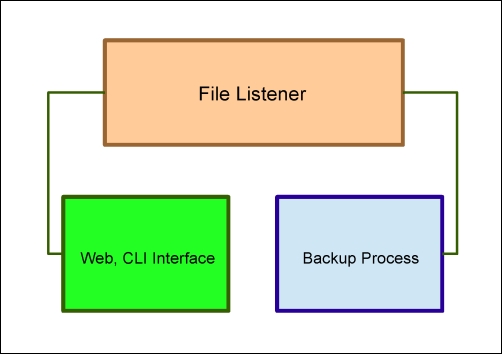By now, we've designed small bits of concurrent programs, primarily in a single piece keeping concurrency largely isolated. What we haven't done yet is tie everything together to build something a little more robust, complex, and more daunting to manage from an administrator's perspective.
Simple chat applications and web servers are fine and dandy. However, you will eventually need more complexity and require external software to meet all of the more advanced requirements.
In this case, we'll build something that's satisfied by a few dissonant services: a file manager with revision control that supplies web and shell access. Services such as Dropbox and Google Drive allow users to keep and share files among peers. On the other hand, GitHub and its ilk allow for a similar platform but with the critical added benefit of revision control.
Many organizations face problems with the following sharing and distribution options:
- Limitations on repositories, storage, or number of files
- Potential inaccessibility if the services are down
- Security concerns, particularly for sensitive information
Simple sharing applications such as Dropbox and Google Drive are great at storing data without a large amount of revision control options. GitHub is an excellent collaborative revision control and distribution system, but comes with many costs and the mistakes by developers can lead to large and potentially serious security lapses.
We'll be combining the aims of version control (and the GitHub ideal) with Dropbox's / Google Drive's simplicity and openness. This type of application will be perfect as an intranet replacement—wholly isolated and accessible with custom authentication that doesn't necessarily rely on cloud services. The ability to keep it all in-house removes any potential for network security concerns and allows an administrator to design permanent backup solutions in a way that fits their organization.
File sharing within the organization will allows forking, backups, file locking, and revision control all from the command line but also through a simple web interface.
When designing a concurrent application, we will have three components running in separate processes. A file listener will be alerted to make changes to files in specified locations. A web-CLI interface will allow users to augment or modify files, and a backup process will be bound to the listener to provide automated copies of new file changes. With that in mind, these three processes will look a bit like what is shown in the following diagram:

Our file listener process will do the following three things:
- Keep an eye on any file changes
- Broadcast to our web/CLI servers and the backup process
- Maintain the state of any given file in our database / data store
The backup process will accept any broadcasts from the file listener (#2) and create a backup file in an iterative design.
Our general server (web and CLI) will report details on individual files and allow versioning forward and backward with a customizable syntax. This part of the application will also have to broadcast back to the file listener when new files are committed or revisions are requested.
